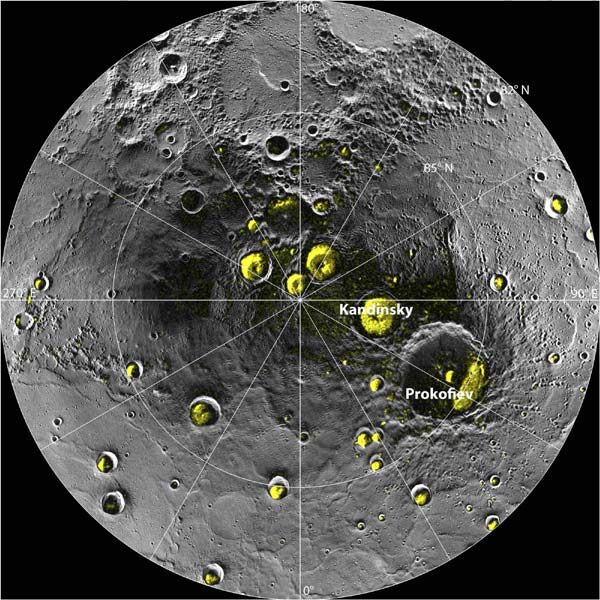NASA probe reveals organics, ice on Mercury
(Agencies) Updated: 2012-11-30 08:03CAPE CANAVERAL, Fla.- Despite searing daytime temperatures, Mercury, the planet closest to the sun, has ice and frozen organic materials inside permanently shadowed craters in its north pole, NASA scientists said on Thursday.
Earth-based telescopes have been compiling evidence for ice on Mercury for 20 years, but the finding of organics was a surprise, say researchers with NASA's MESSENGER spacecraft, the first probe to orbit Mercury.
Both ice and organic materials, which are similar to tar or coal, were believed to have been delivered millions of years ago by comets and asteroids crashing into the planet.
"It's not something we expected to see, but then of course you realize it kind of makes sense because we see this in other places," such as icy bodies in the outer solar system and in the nuclei of comets, planetary scientist David Paige, with the University of California, Los Angeles, told Reuters.
Unlike NASA's Mars rover Curiosity, which will be sampling rocks and soils to look for organic materials directly, the MESSENGER probe bounces laser beams, counts particles, measures gamma rays and collects other data remotely from orbit.
The discoveries of ice and organics, painstakingly pieced together for more than a year, are based on computer models, laboratory experiments and deduction, not direct analysis.
"The explanation that seems to fit all the data is that it's organic material," said lead MESSENGER scientist Sean Solomon, with Columbia University in New York.
Added Paige, "It's not just a crazy hypothesis. No one has got anything else that seems to fit all the observations better."
Scientists believe the organic material, which is about twice as dark as most of Mercury's surface, was mixed in with comet- or asteroid-delivered ice eons ago.
The ice vaporized, then re-solidified where it was colder, leaving dark deposits on the surface. Radar imagery shows the dark patches subside at the coldest parts of the crater, where ice can exist on the surface.
The areas where the dark patches are seen are not cold enough for surface ice without the overlying layer of what is believed to be organics.
So remote was the idea of organics on Mercury that MESSENGER got a relatively easy pass by NASA's planetary protection protocols that were established to minimize the chance of contaminating any indigenous life-potential material with hitchhiking microbes from Earth.
Scientists don't believe Mercury is or was suitable for ancient life, but the discovery of organics on an inner planet of the solar system may shed light on how life got started on Earth and how life may evolve on planets beyond the solar system.
"Finding a place in the inner solar system where some of these same ingredients that may have led to life on Earth are preserved for us is really exciting," Paige said.
MESSENGER, which stands for Mercury Surface, Space Environment, Geochemistry and Ranging, is due to complete its two-year mission at Mercury in March.
Scientists are seeking NASA funding to continue operations for at least part of a third year. The probe will remain in Mercury's orbit until the planet's gravity eventually causes it to crash onto the surface.
Whether the discovery of organics now prompts NASA to select a crash zone rather than leave it up to chance remains to be seen. Microbes that may have hitched a ride on MESSENGER likely have been killed off by the harsh radiation environment at Mercury.
The research is published in this week's edition of the journal Science.








